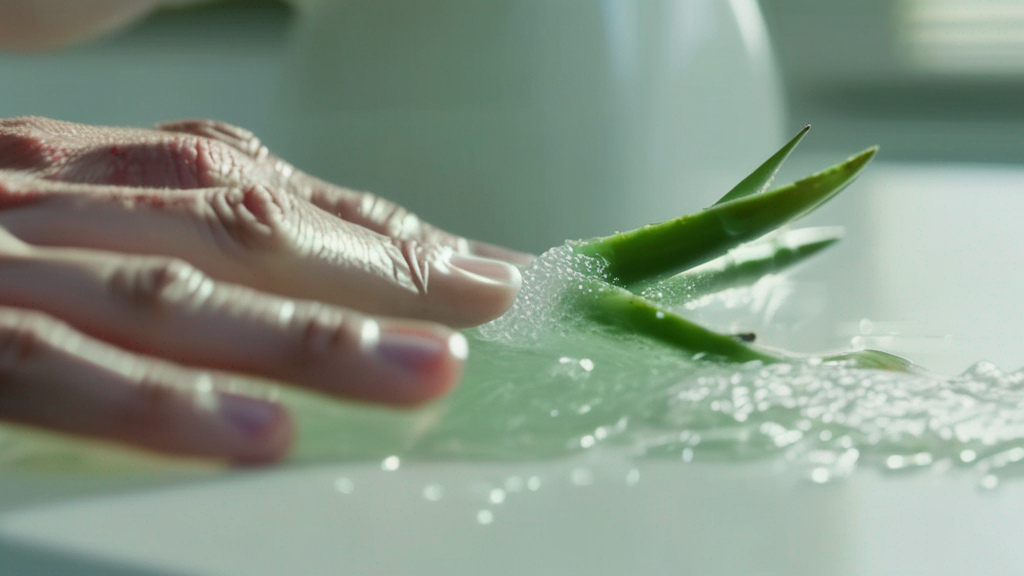Burns happen in the blink of an eye—one moment you’re stirring coffee on the stovetop, the next you’ve brushed against a hot pan. Knowing how to respond quickly can mean the difference between a lingering scar and a fast recovery. This guide lays out the immediate actions you need to take the moment a minor burn occurs, from kitchen mishaps to sunburn relief. Let’s dive in.
1. Recognize a Minor Burn
Not every burn requires an ER visit. Minor (first-degree and small second-degree) burns typically look like this:
- First-degree: Redness, mild swelling, pain but no blisters (e.g., sunburn).
- Small second-degree: Superficial blistering over an area smaller than 3 inches in diameter.
If the burn covers a large area, involves the face, hands, feet, groin, or appears charred, seek professional care immediately.
2. Immediate Cool-Down
- Stop the burning process: Remove the source—turn off the stove, extinguish flames, move away from steam.
- Cool with running water: Place the burn under cool (not ice-cold) tap water for 10–20 minutes. Cooling reduces heat, eases pain, and prevents deeper tissue damage.
- Avoid ice: Ice can constrict blood vessels and worsen tissue injury.
3. Clean & Protect
Once the raw heat subsides:
- Gently wash: Use mild soap and water to clean debris or spilled food.
- Pat dry: Don’t rub—just dab with a clean towel.
- Apply a thin layer of burn ointment: An antibiotic or aloe-based gel soothes and creates a barrier against bacteria.
- Cover with non-stick dressing: A sterile gauze pad or silicone dressing keeps the area moist and protected.
4. Manage Pain & Swelling
Minor burns can sting. Here’s how to stay comfortable:
- Over-the-counter pain relievers: Ibuprofen or acetaminophen reduce inflammation and pain.
- Elevation: Keep the burned area raised (if on an arm or leg) to limit swelling.
- Hydration: Drink plenty of fluids—healing tissue needs water.
5. Monitor Healing & Watch for Infection
Check your burn daily for:
- Increasing redness beyond the burn border
- Swelling that worsens instead of improves
- Pus, foul odor, or fever (signs of infection)
If you notice any of those, call your healthcare provider right away.
Quick Reference: First Steps at a Glance
| Step | Action | Timeframe |
|---|---|---|
| 1. Stop Burn | Remove heat source, extinguish fire | Immediately |
| 2. Cool | Run cool water over burn | 10–20 minutes |
| 3. Clean | Gently wash with mild soap | Within 30 minutes |
| 4. Protect | Apply ointment and non-stick dressing | After cooling |
| 5. Comfort | Pain relievers, elevation, hydration | As needed |
Case Studies: Real-Life Burn Recovery
Case 1: The Pan Splash
Ravi, 34, spilled hot oil from a frying pan onto his forearm. He ran cold water for 15 minutes, applied aloe gel, and wrapped the area in a light dressing. Within 5 days the redness faded, and by day 10 he had no residual pain or scarring.
Case 2: The Sunburned Weekend
Jenna, 26, forgot sunscreen on a beach trip and got a first-degree burn across her shoulders. She took ibuprofen, applied cool compresses and over-the-counter burn gel three times a day, and rehydrated with water and electrolyte drinks. The tightness eased in 48 hours, and she was back to normal by day 5.
Case 3: The Steam Mishap
Marcus, 58, accidentally knocked over a pot of boiling water onto his foot. After cooling under the shower, he cleaned and dressed the area, soaking his foot daily in cool water and changing the dressing twice a day. He added vitamin E oil once blisters subsided. By two weeks, his burn had healed completely.
Preventing Minor Burns in the Future
Once you’ve treated a burn, take steps to avoid the next one:
- Use protective gear: Oven mitts, long sleeves, and pot holders.
- Adjust water heater: Keep the temperature at or below 120°F (49°C) to prevent scalds.
- Supervise children: Keep kids away from hot surfaces and liquids.
- Practice sun safety: Apply broad-spectrum SPF 30+ every two hours in the sun.
Frequently Asked Questions
Q: Should I pop blisters on a burn?
A: No—leave blisters intact to protect the underlying skin. If a blister breaks on its own, gently clean the area and reapply a sterile dressing.
Q: Can I use butter or toothpaste on a burn?
A: Avoid home “old wives’ remedies” like butter or toothpaste—they can trap heat and introduce bacteria.
Q: How often should I change the bandage?
A: Change dressings once or twice daily, or whenever they become wet or soiled.
Q: When should I seek professional medical care?
A: If the burn covers more than 3 inches, affects the face/hands/feet/genitals, shows signs of infection, or you have diabetes or a weakened immune system, see a doctor promptly.
Q: What over-the-counter products help burns heal faster?
A: Look for silicone-based dressings, antibiotic ointments, or aloe vera gels designed for burns. Follow label instructions.
Wrapping Up
A minor burn doesn’t have to leave a lasting mark if you act quickly and follow these steps: stop the burn, cool the skin, clean gently, protect with an ointment and dressing, manage pain, and monitor for infection. Keep this guide handy in your kitchen or first-aid kit so you’re ready the next time steam, oil, or sun catches you off guard.
Stay safe, stay prepared, and here’s to quick healing!
